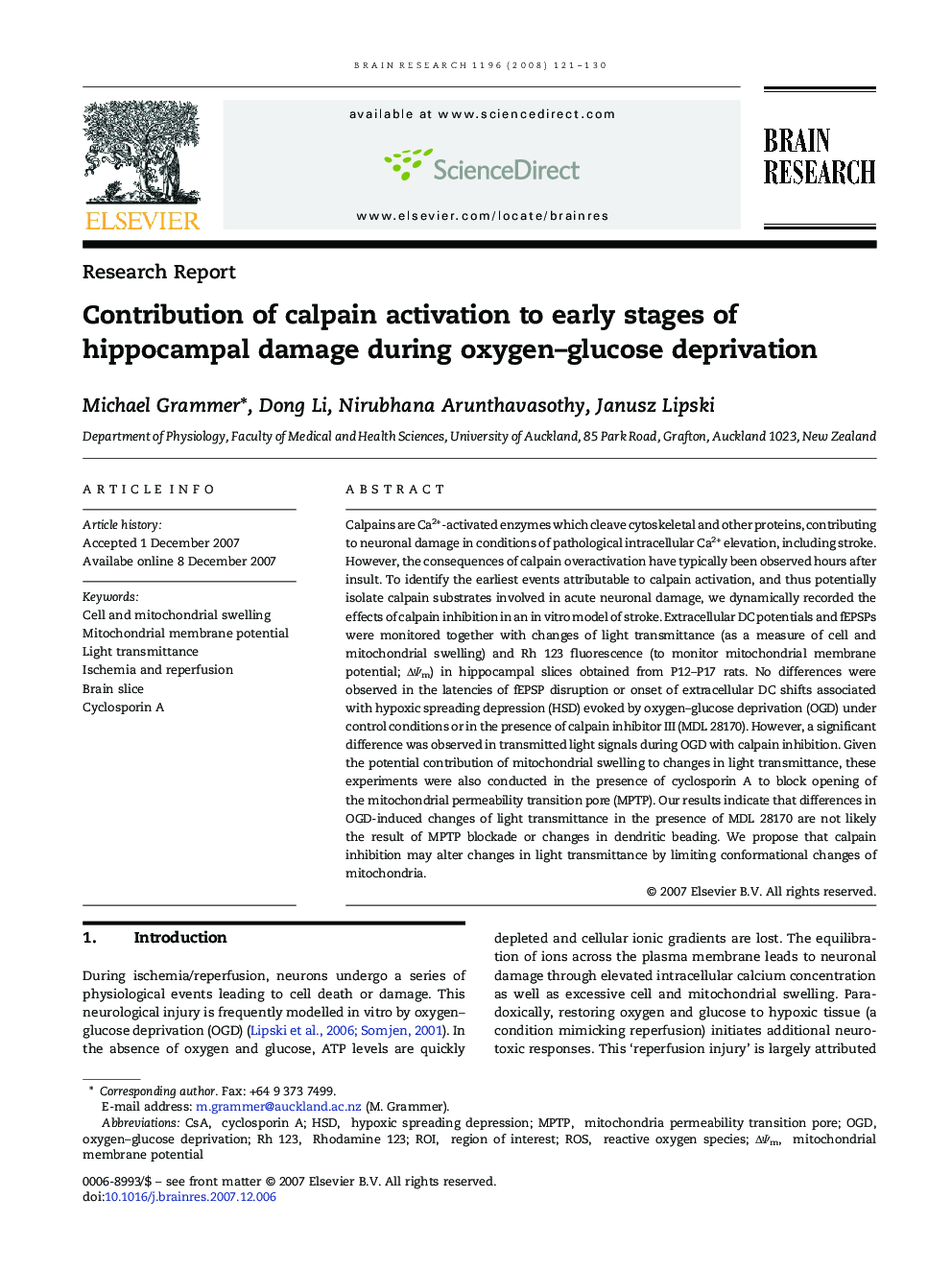| Article ID | Journal | Published Year | Pages | File Type |
|---|---|---|---|---|
| 4330010 | Brain Research | 2008 | 10 Pages |
Abstract
Calpains are Ca2+-activated enzymes which cleave cytoskeletal and other proteins, contributing to neuronal damage in conditions of pathological intracellular Ca2+ elevation, including stroke. However, the consequences of calpain overactivation have typically been observed hours after insult. To identify the earliest events attributable to calpain activation, and thus potentially isolate calpain substrates involved in acute neuronal damage, we dynamically recorded the effects of calpain inhibition in an in vitro model of stroke. Extracellular DC potentials and fEPSPs were monitored together with changes of light transmittance (as a measure of cell and mitochondrial swelling) and Rh 123 fluorescence (to monitor mitochondrial membrane potential; ÎΨm) in hippocampal slices obtained from P12-P17 rats. No differences were observed in the latencies of fEPSP disruption or onset of extracellular DC shifts associated with hypoxic spreading depression (HSD) evoked by oxygen-glucose deprivation (OGD) under control conditions or in the presence of calpain inhibitor III (MDL 28170). However, a significant difference was observed in transmitted light signals during OGD with calpain inhibition. Given the potential contribution of mitochondrial swelling to changes in light transmittance, these experiments were also conducted in the presence of cyclosporin A to block opening of the mitochondrial permeability transition pore (MPTP). Our results indicate that differences in OGD-induced changes of light transmittance in the presence of MDL 28170 are not likely the result of MPTP blockade or changes in dendritic beading. We propose that calpain inhibition may alter changes in light transmittance by limiting conformational changes of mitochondria.
Keywords
Related Topics
Life Sciences
Neuroscience
Neuroscience (General)
Authors
Michael Grammer, Dong Li, Nirubhana Arunthavasothy, Janusz Lipski,
